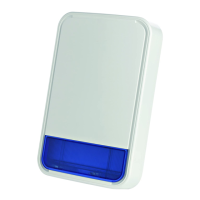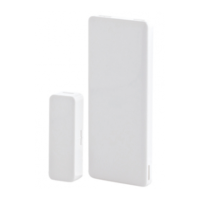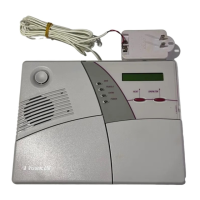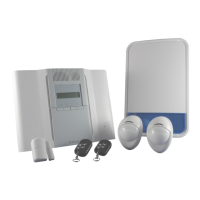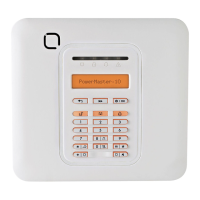DE5110 13
The following list includes interpretations for the basic states of the
six front panel function indicators. Two basic states - a
lighted
indicator and an
extinguished
one - are explained below.
Other indications are dealt with in the programming guide and the
user's guide.
• READY indicator:
This indicator lights steadily if all zones are
secured and the MAESTRO-1600 is ready to be armed. An
extinguished READY indicator warns you of "open" zones (but
not when type 1 delay and follower zones are open).
• ARM indicator:
This indicator lights steadily throughout the
armed period. An extinguished ARM indicator informs you that
the system is in the disarmed state.
• POWER indicator:
This indicator lights steadily while AC power
is supplied to the system. An extinguished POWER indicator
denotes a power failure.
• BYPASS indicator:
This indicator lights steadily to indicate that at
least one zone has been selected for bypassing. An extinguished
BYPASS indicator means that none of the zones is bypassed.
Note: The BYPASS indicator functions only while the system is
disarmed; bypassing is not possible while the system is in
the
armed state
.
• MEMORY indicator:
This indicator lights steadily while the
system is in the disarmed state as a sign that an alarm occurred
throughout the last arm period or throughout the ongoing
Disarm period. An extinguished MEMORY indicator is a sign
that the recent arm/disarm cycle has been uneventful.
Note: The alarm memory is cleared upon arming, and the
MEMORY indicator does not function while the system is in the
armed state.
• TROUBLE indicator:
This indicator lights steadily whenever
trouble is detected. The trouble indication is cleared upon
arming. An extinguished TROUBLE indicator while the system is
in the disarmed state signifies a "no trouble" situation.
Figure 5.1 Front View of the KP-1001/16
A buzzer on the printed circuit board of the keypad "talks" to the
installer and the user by sounding a few recognizable beeping
sequences. The audible signals combine with the visual display to
permit quick and easy programming and operation.
.3 .H\SDG ZLWK /DUJH /&'
The KP-1003 features 19 keys (Fig. 5.2):
•
A 3 x 4 key numerical keyboard.
•
A column of 4 function keys:
AWAY, HOME, INSTANT
and
BYPASS
.
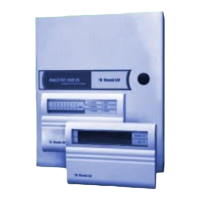
